I just returned from a photo workshop in the Olympic National Park and one location we visited several times was the Hoh Rainforest. This is such a challenging and incredible location to photograph in, it often overwhelms first time visitors/photographers, so that is why we visit it multiple times. The first time is to get acquainted and get used to the chaos of the scenes, the second is to use familiarity and new-found knowledge to work the area to create meaningful compositions.
The Hoh Rainforest is located on the Olympic Peninsula in NW Washington State, in the boundaries of the Olympic National Park. It is one of the largest temperate rainforests in the US. As such, it also receives a massive amount of rain each year as the coastal storms compress against the Olympic Mountains and drop their moisture on this area. If you visit this area, be prepared to protect your gear and yourself from the moisture. Rain and overcast conditions are what you want when photographing the Hoh Rainforest. Rain makes the color on the foliage pop and the clouds above provide nice even lighting in the forest. The best times to visit are typically in April and May, though May tends to be a lot drier, which is pleasant, yet more difficult photographically due to sunlight and harsh shadows in the forest. This year, we had sunny conditions which meant that we had to be up and on the road early (4am) to get in to the forest before the sun rose high in the sky and made shooting conditions unfavorable.
Simplify and Isolate
The Hoh Rainforest is a chaotic riot of stuff everywhere! Because there is so much packed in to each square foot, it can oftentimes be hard to “see” a composition, or hard to create an image with a clear subject/story. As we were driving around during the workshop, we asked each other which locations were in the top 3 of most difficult places to shoot. Several people, including myself, said the Hoh Rainforest is in the top 3. For me, my list is 1) Hoh Rainforest 2) Death Valley 3) Palouse. The Hoh because there is WAY TOO MUCH in each scene and for the others its the opposite, that there oftentimes isn’t a clear subject and as a photographer you really need to work to create a composition. I do love the challenge though of tough locations as I feel it flexes my creative muscles as well as strengthens my artistic vision/voice. So, during our workshop, I kept preaching to simplify the scene and isolate the subject to remove unwanted/distracting elements. Case in point…
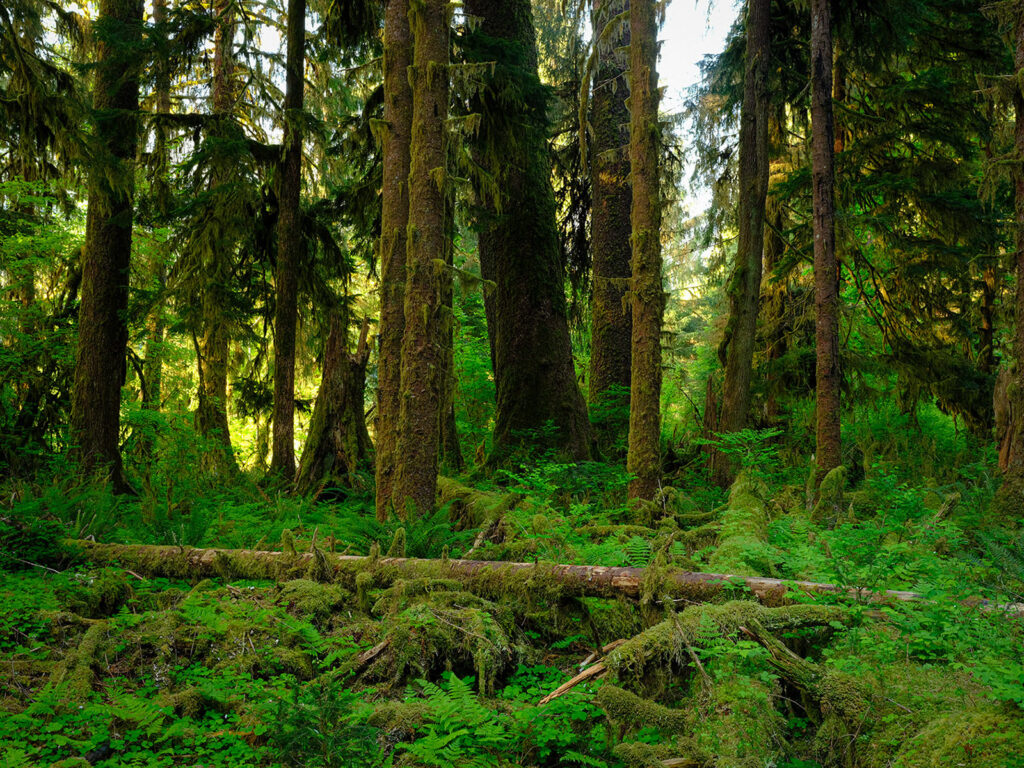
This is a wide angle shot of the Hoh Rainforest. It’s chaos! What is the subject? As a viewer, where should I look? My eye is jumping all over the scene and I don’t know what the photographer is trying to communicate to me, other than giving a sense of chaos and mess in a lush green forest. Now, contrast the above with this…
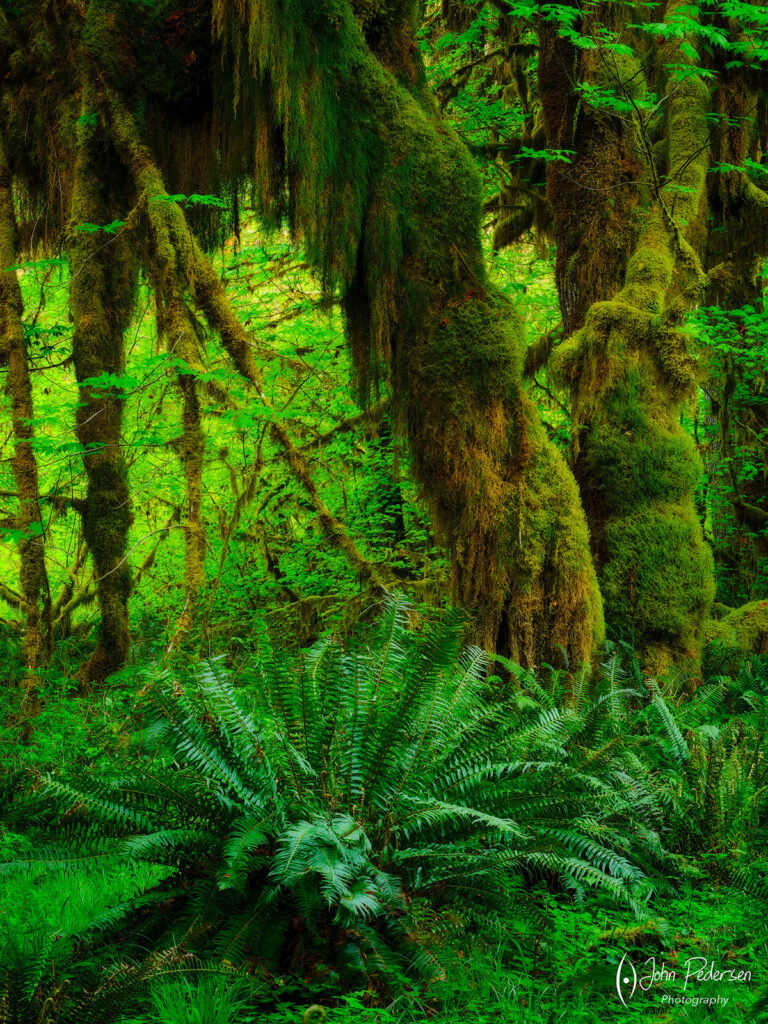
In this shot, I took the larger scene and simplified it to a photograph of a fern and a couple of trees, that happens to be in a riotous green lush forest. The subject and where to look is more evident. I simplified/distilled the scene in order to make it stronger photographically by zooming in and removing elements. Check out my previous post about subtractive photography.
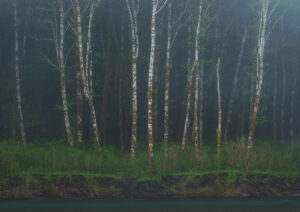
Environmental conditions can also help in forest photography. When there is fog in the area, as there often is in this area, I seek out stands of alder trees along the Hoh River. Shots like this create a sense of mystery and intrigue in the scene.
Slow Down
The only way to simplify and isolate in this forest is to SLOW DOWN. Slow down your walking so you can assess each scene as you walk through it. If you find something that attracts you, slow down to assess the scene, take a visual inventory and then determine if you can create a good image. In this forest, you don’t “take” a photograph, you have to make it by seeing and distilling the scene in to your photograph. And, as you slow down, don’t forget to look down at the small stuff. You might be able to find some wild trillium flowers to photograph.
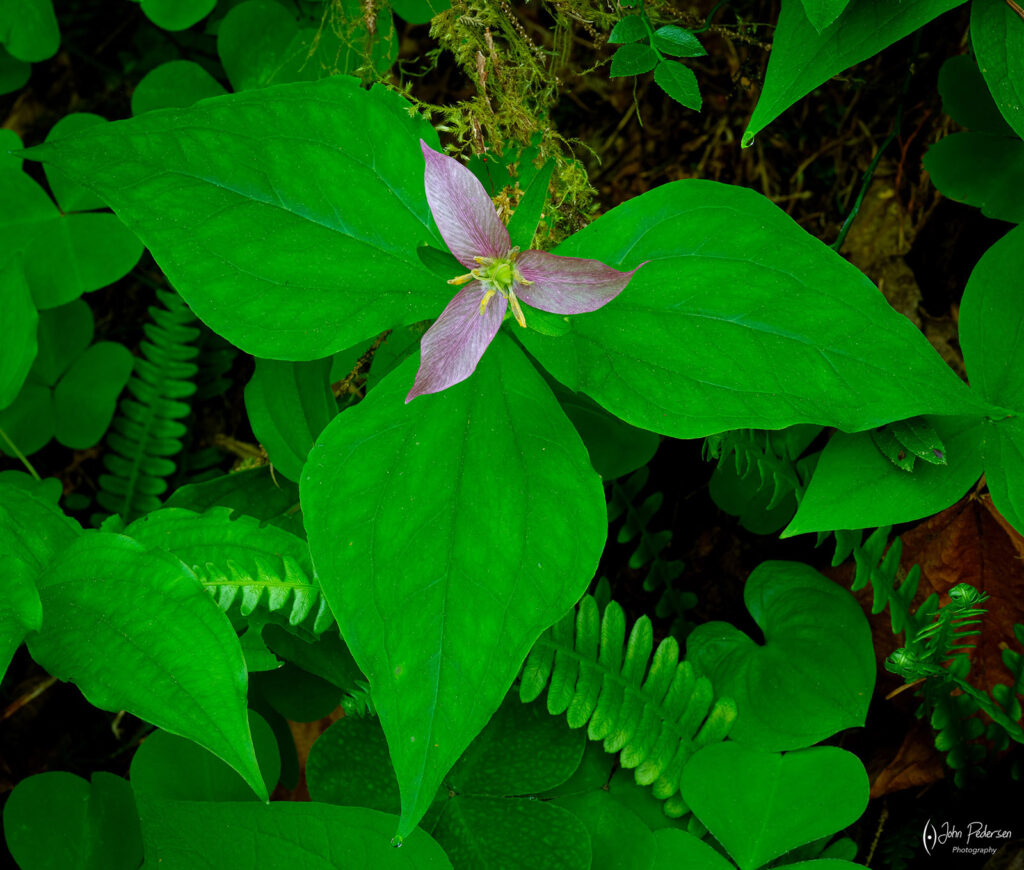
There is so much to photograph in Olympic National Park, from amazing beaches, waterfalls, rivers, foliage, deer, elk, snow capped mountains on top of Mt Olympus….but the real gem of this area is the Hoh Rainforest. If you travel to the main area of the Hoh, you will find two trails that are the best. A short (.8 mile) trail leads you to the Hall of Mosses which features amazing trees covered entirely by hanging moss. The second trail, the Spruce Trail, is a 1.2 mile loop trail that winds through the forest. Both trails showcase an immense biodiversity and you will find so many different shades of green that you never knew existed! Along the drive to these trails, you will pass by the Hoh River which has several nice photographic areas in the right conditions. And, you will also pass by a couple of small ponds on the north side of the road that can offer some great reflections or moody scenes to photograph. If you choose to visit this area, just remember to slow down and simplify and work with the weather conditions that nature provides to you.
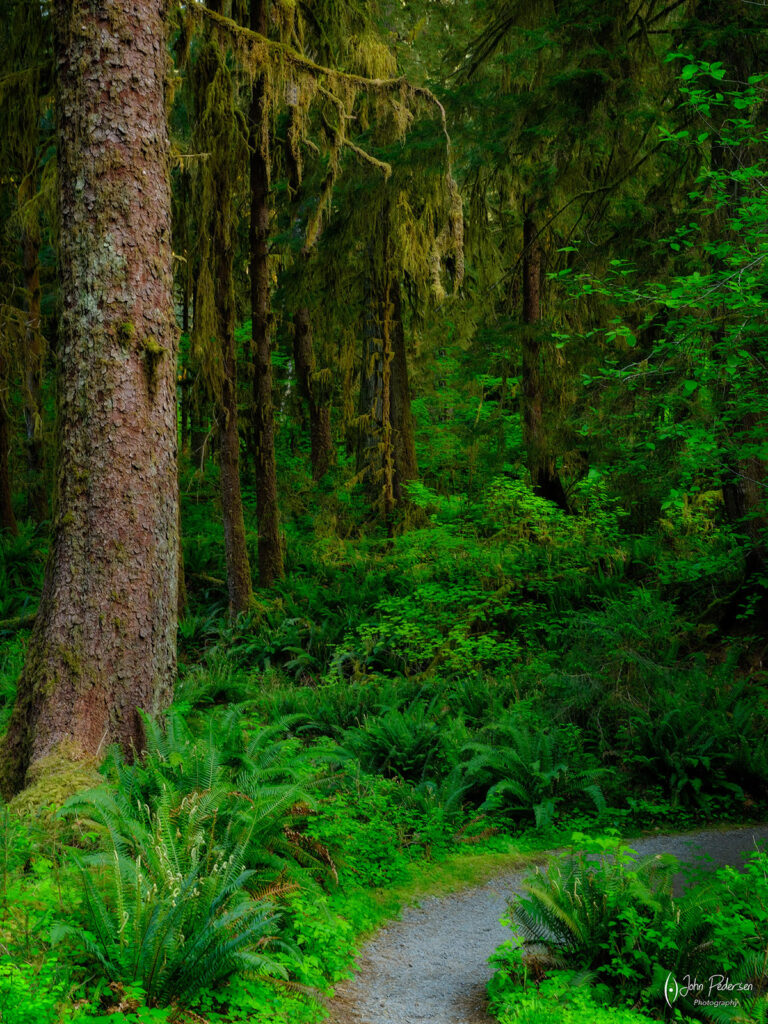
Spruce Trail
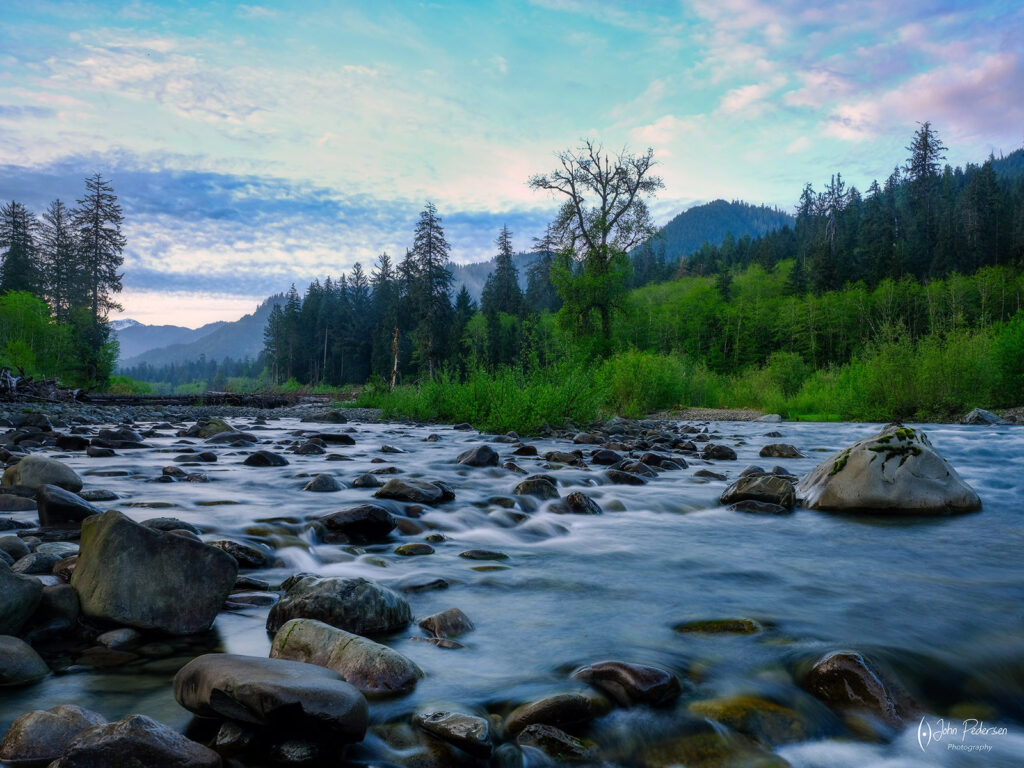
Hoh River

Simplify and isolate a fern against weathered wood
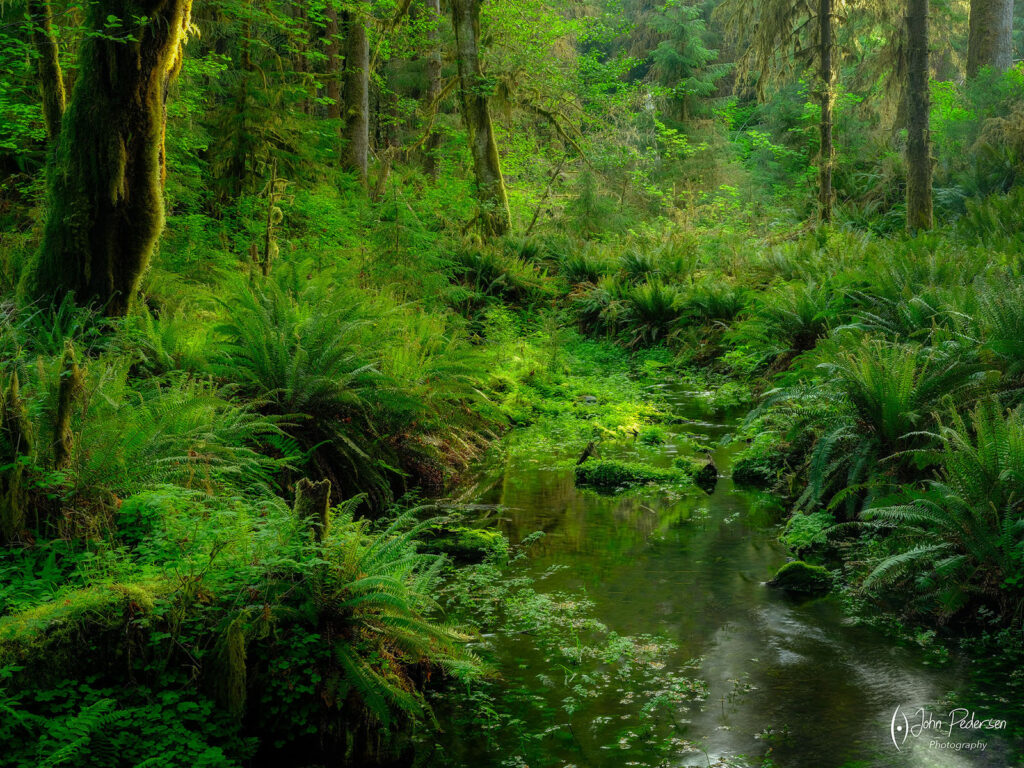
A small stream in a chaotic forest scene


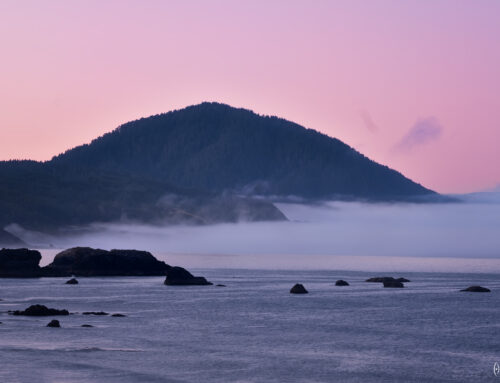
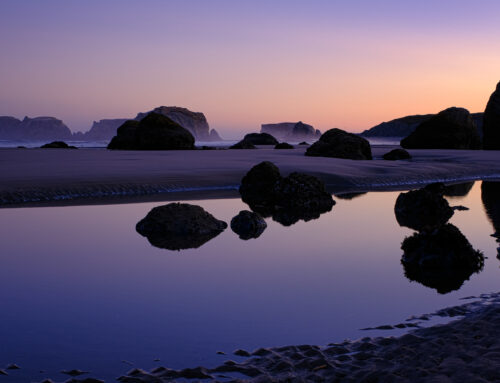
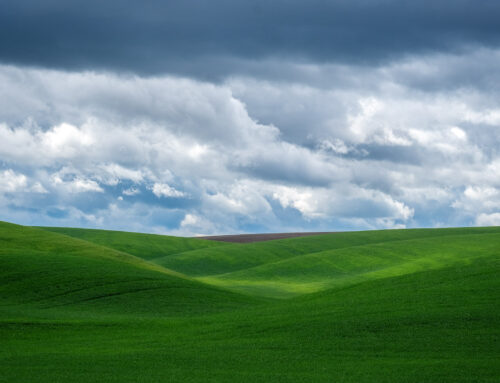
Leave A Comment